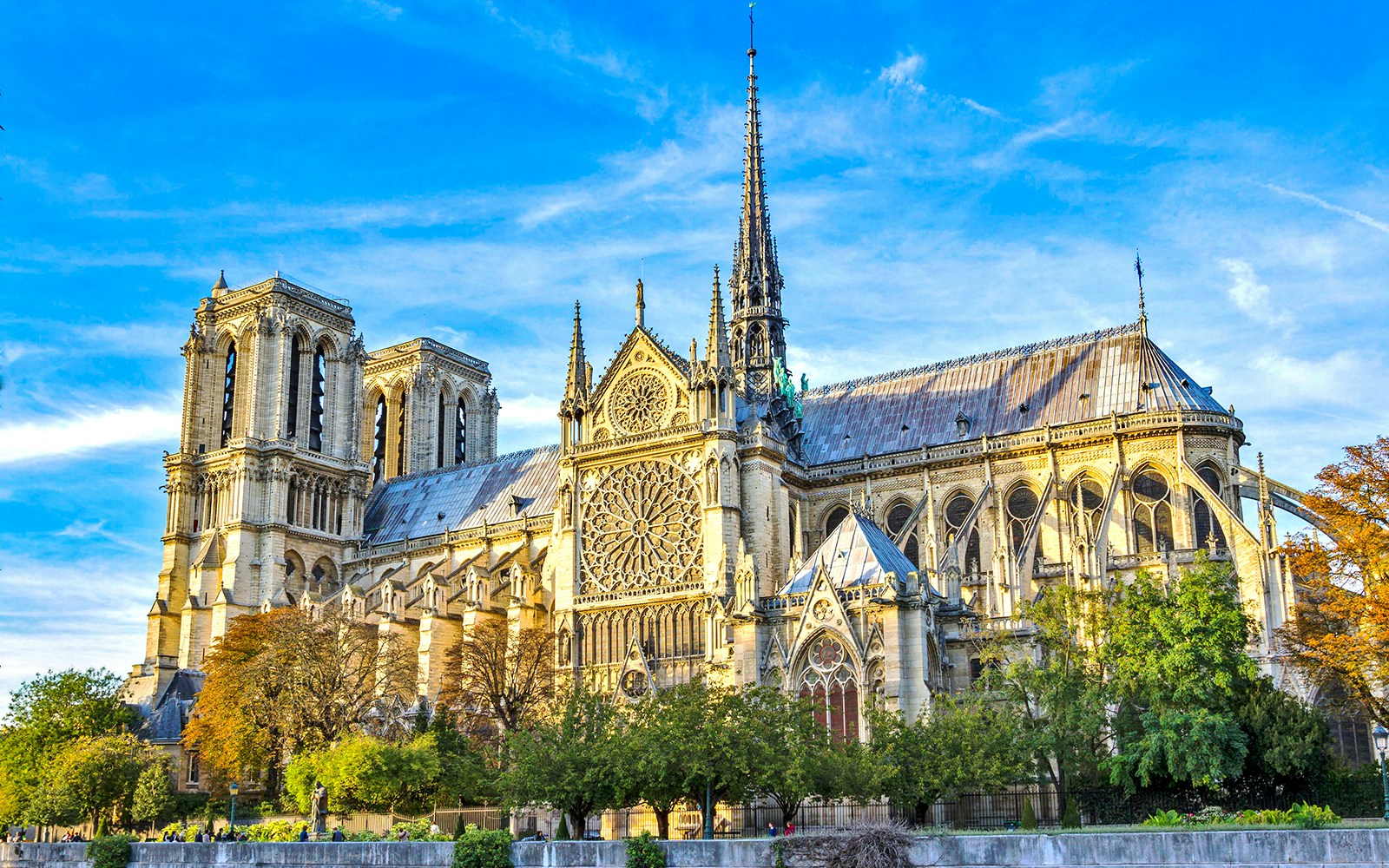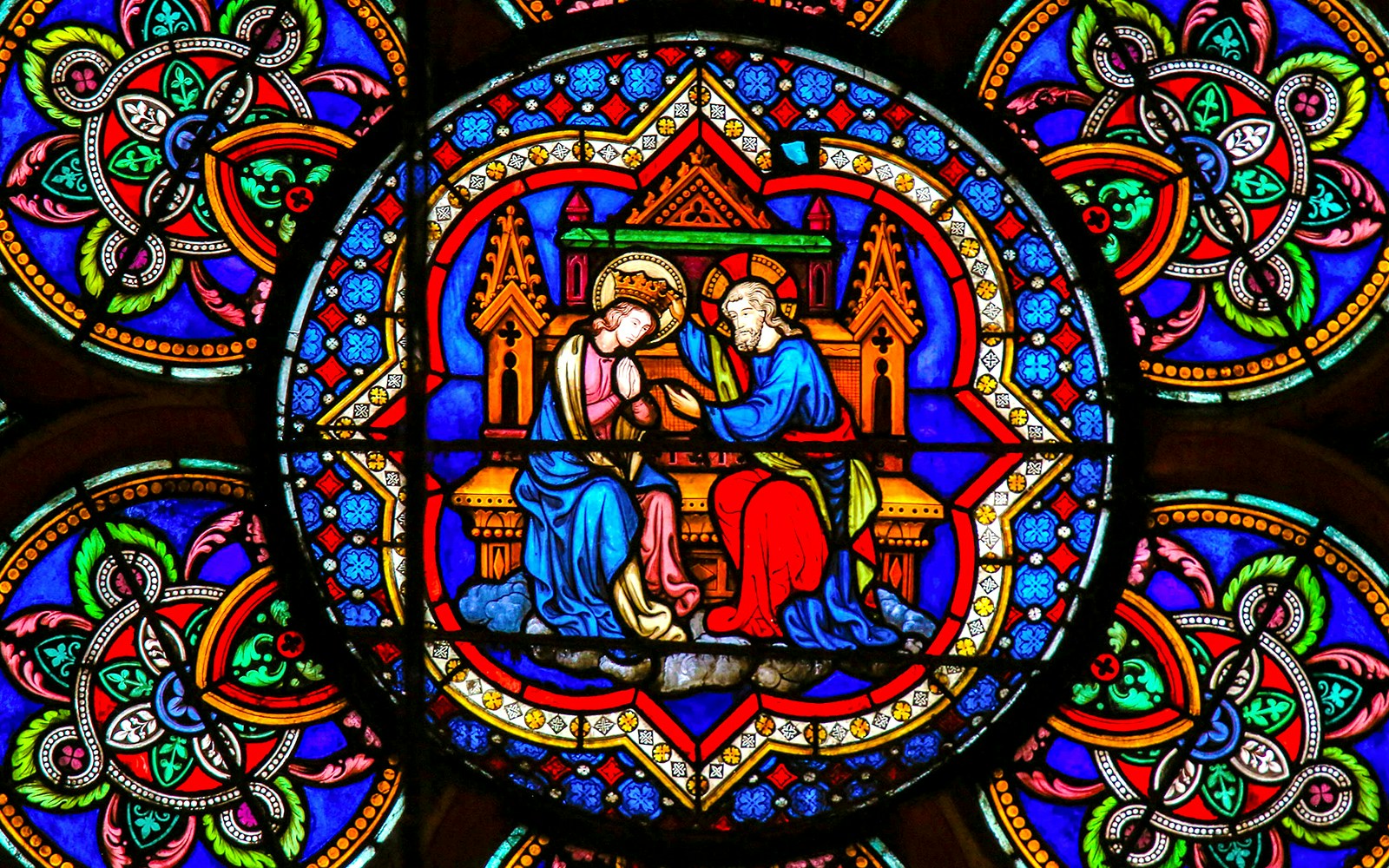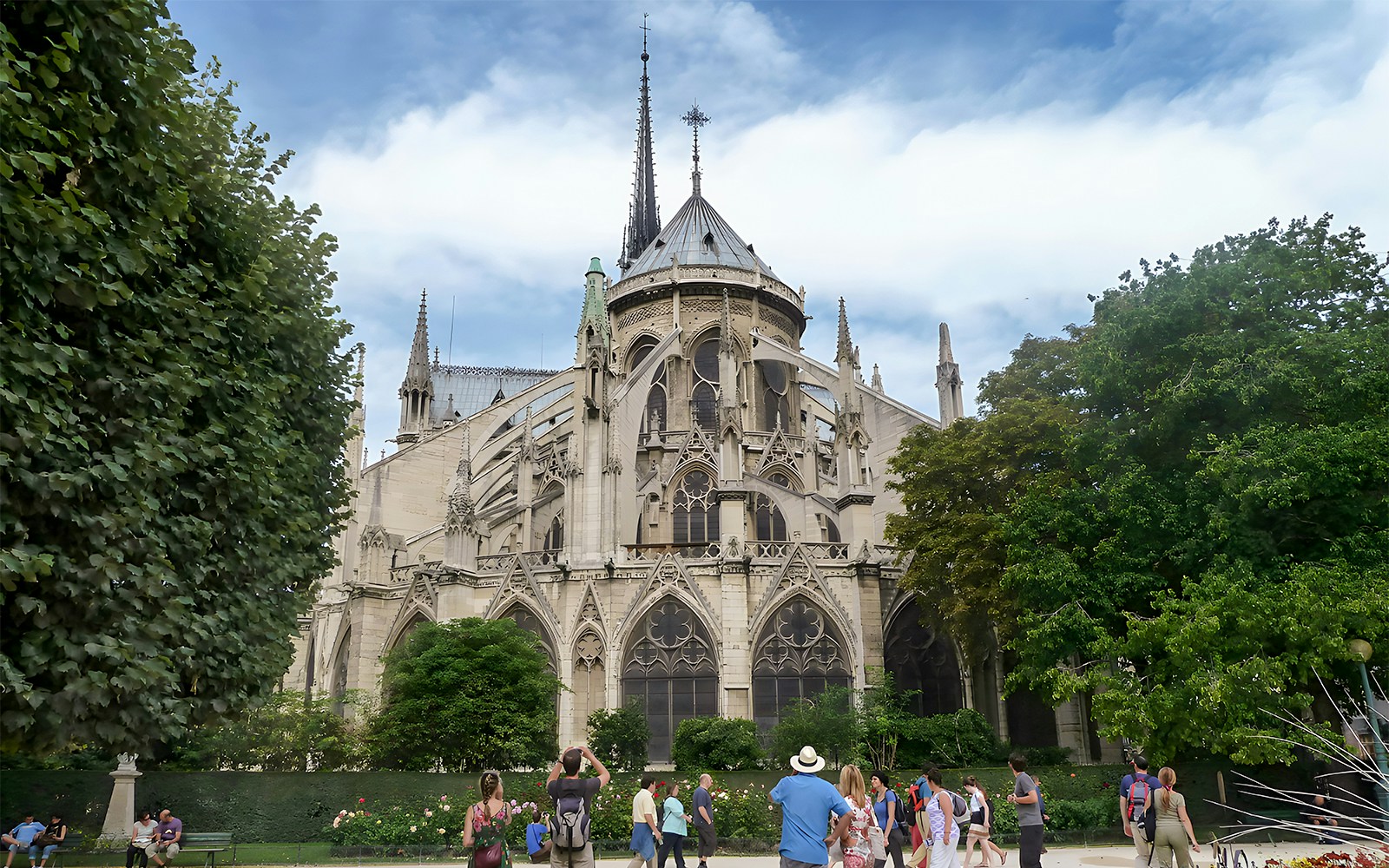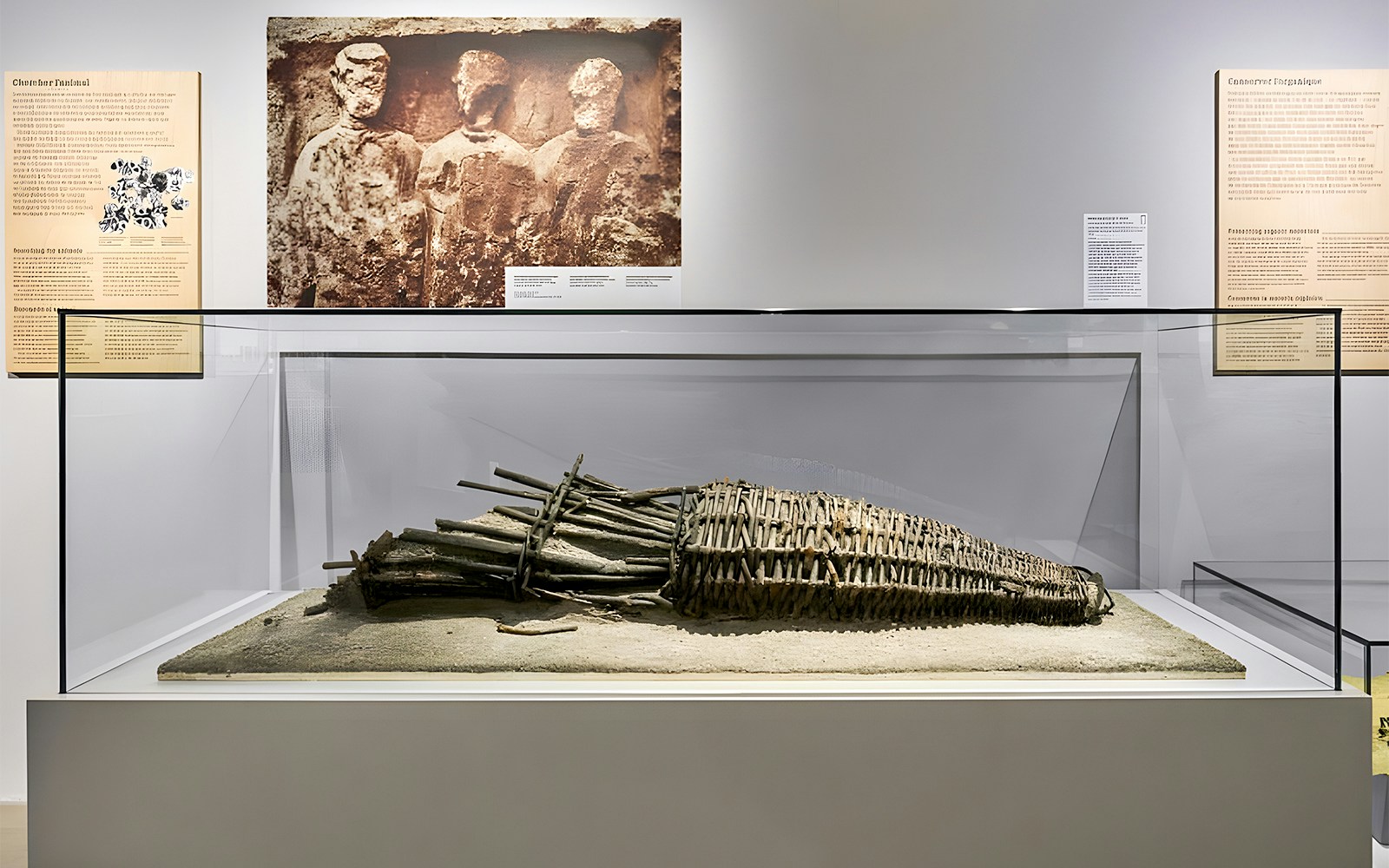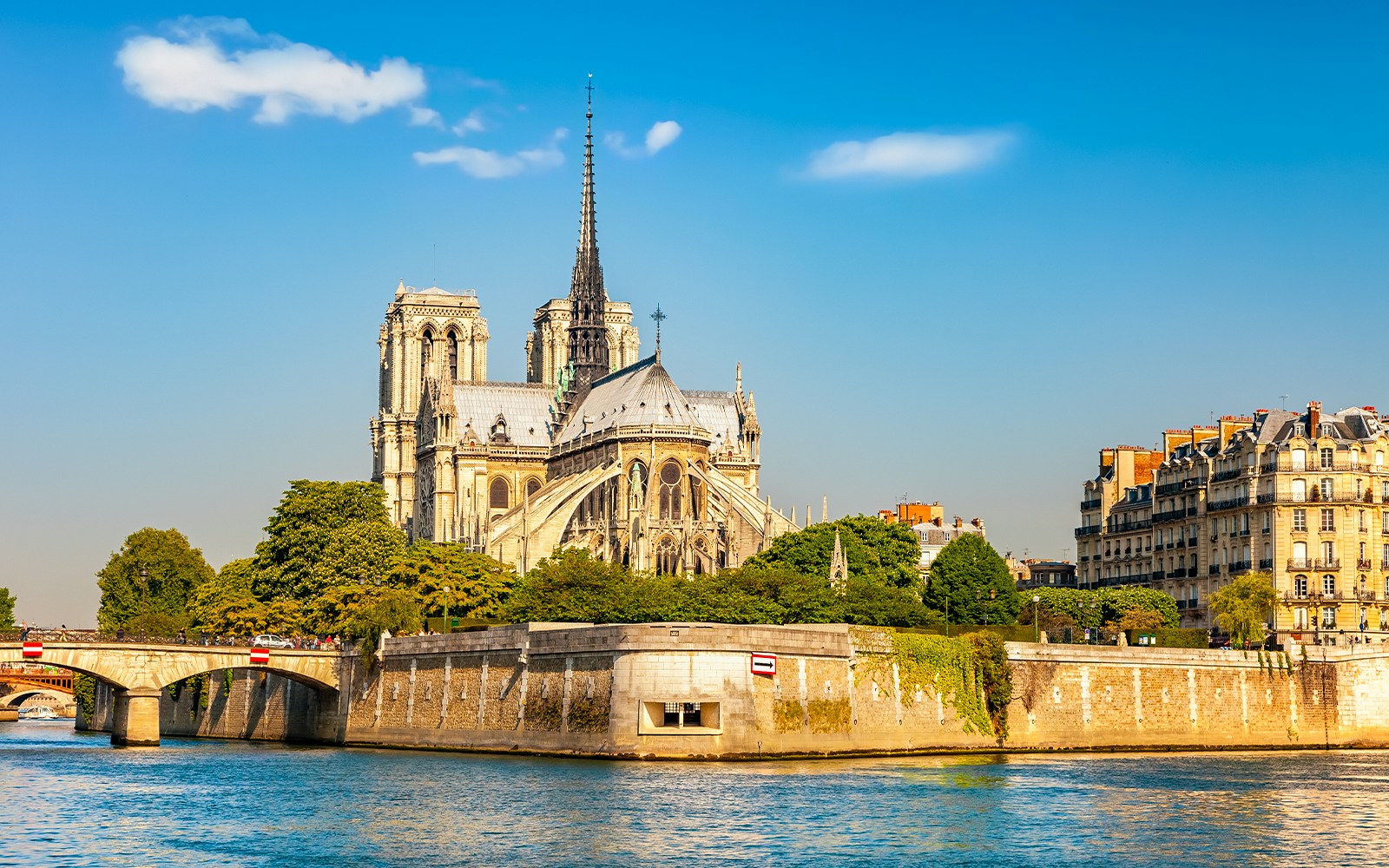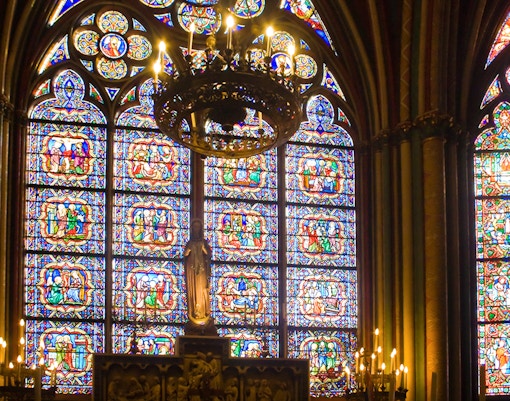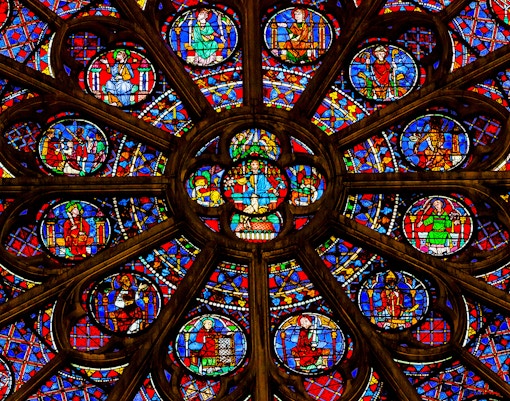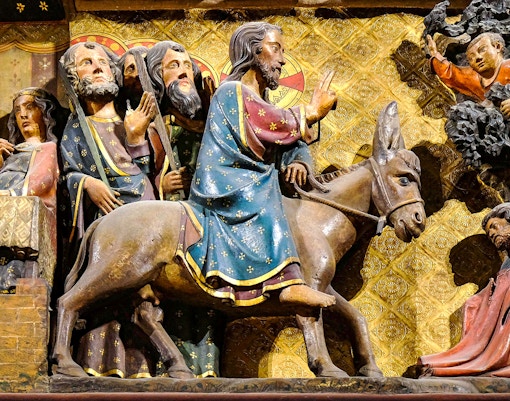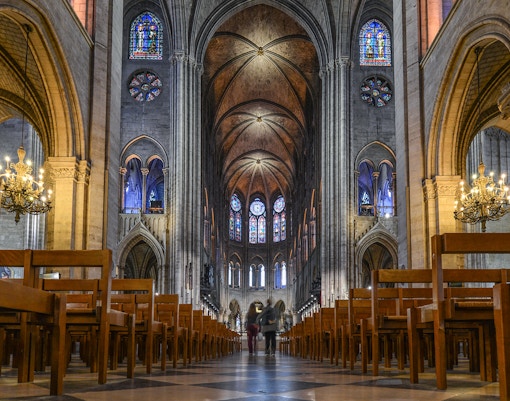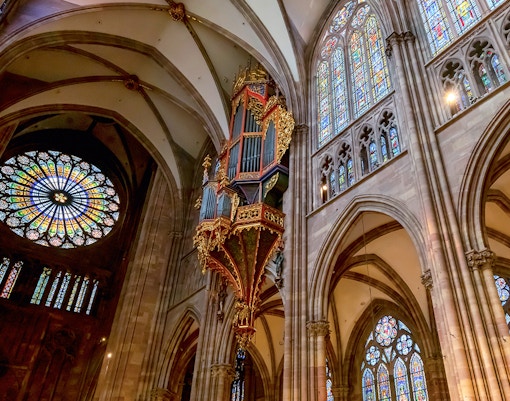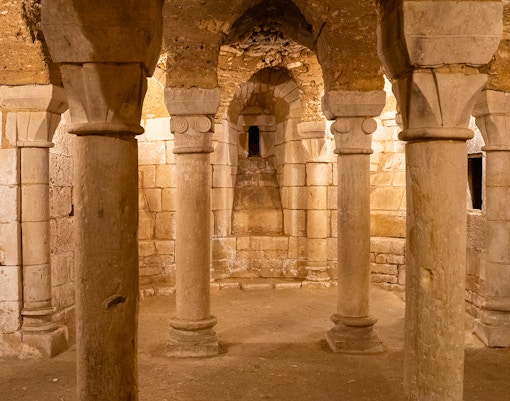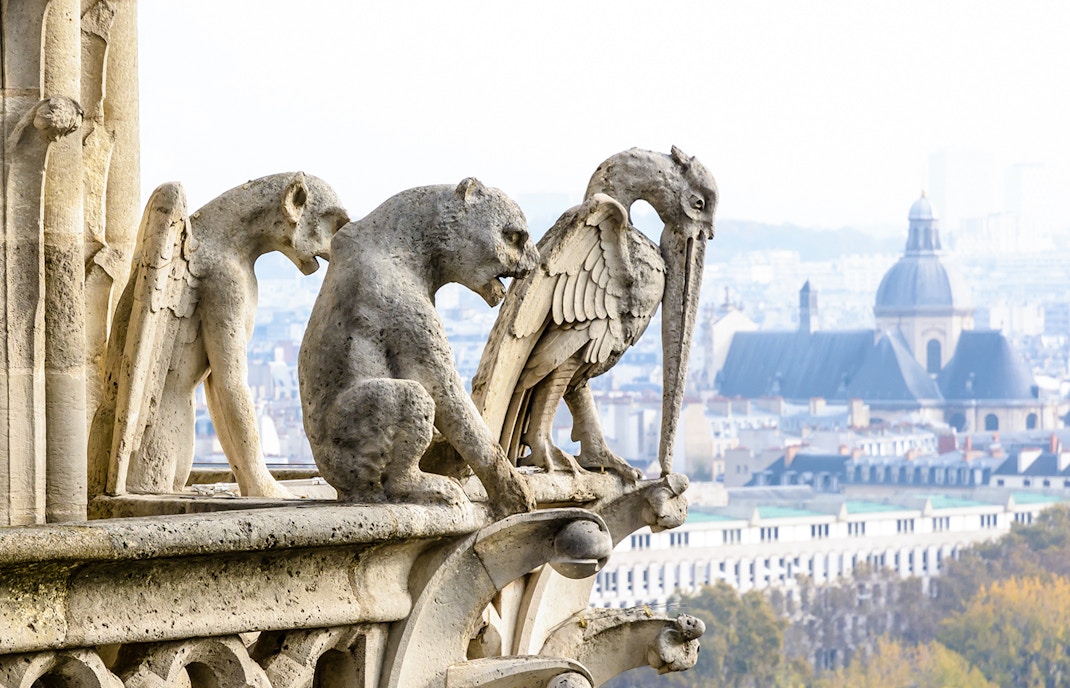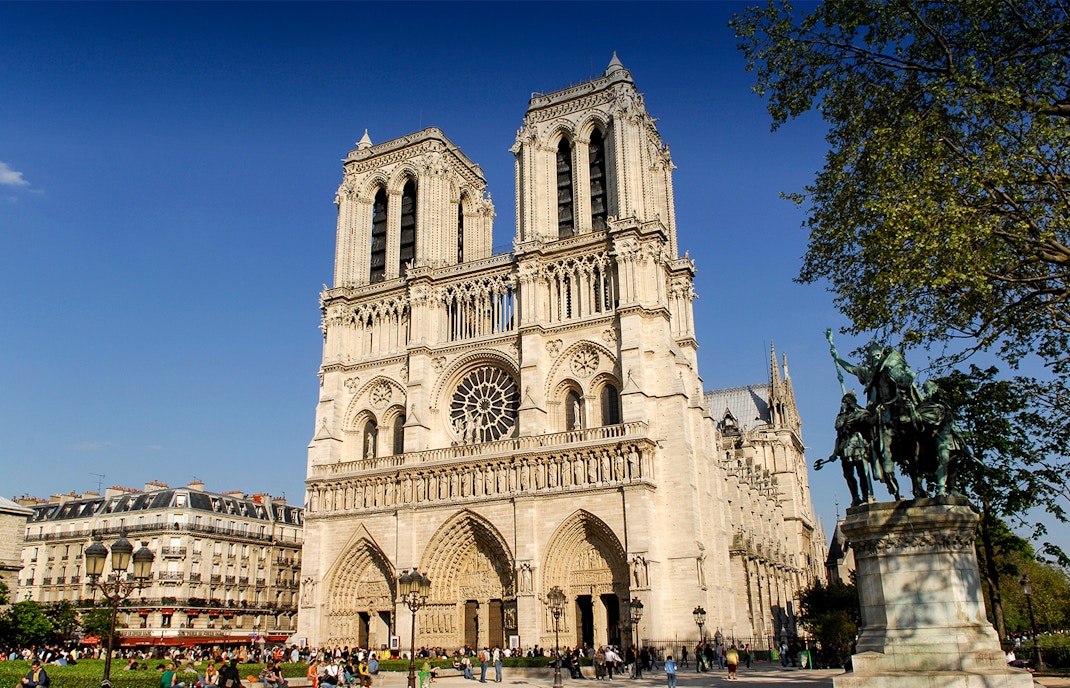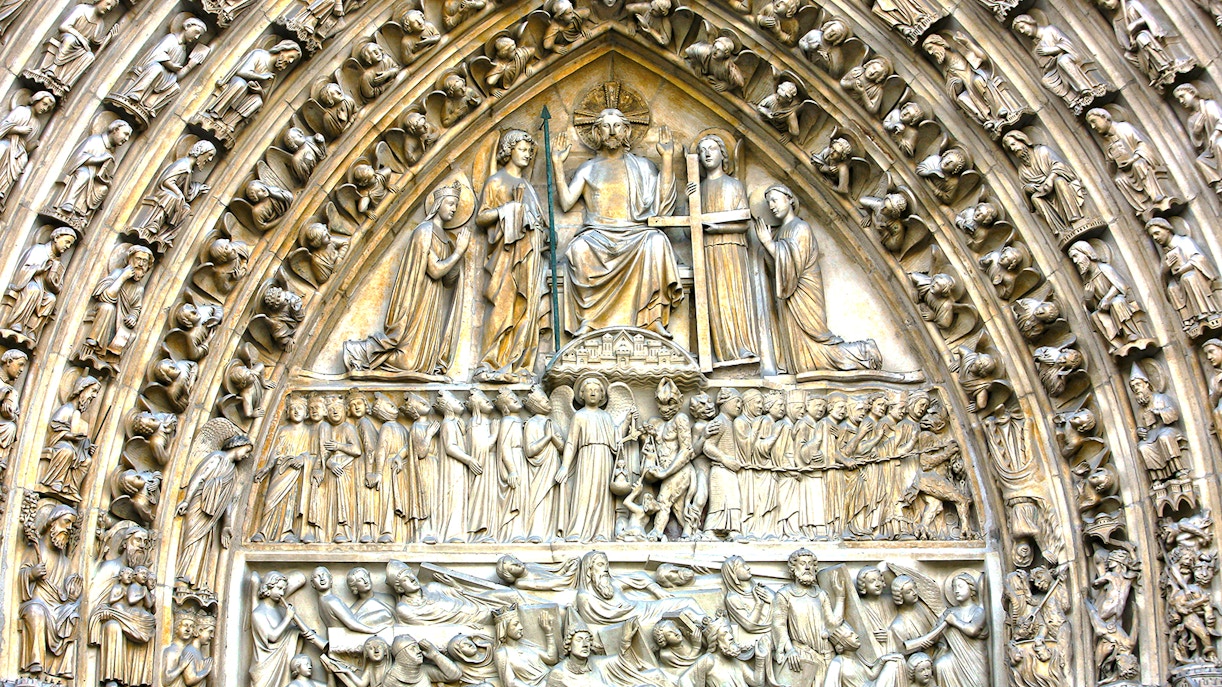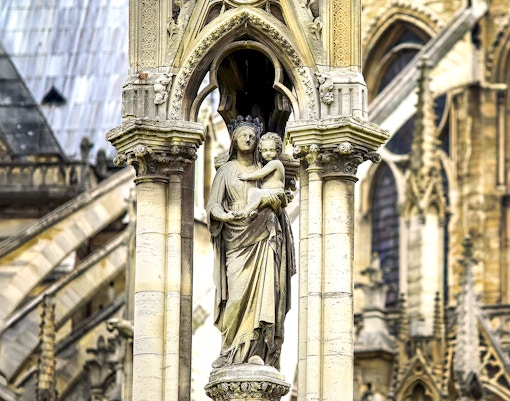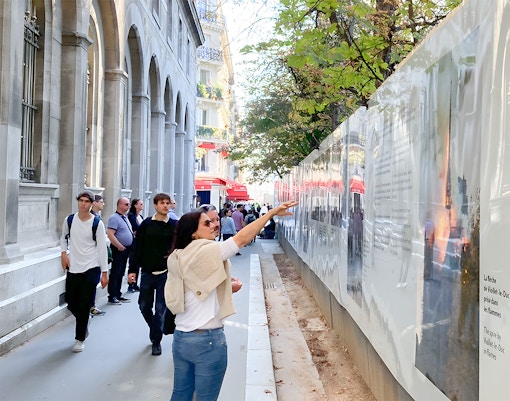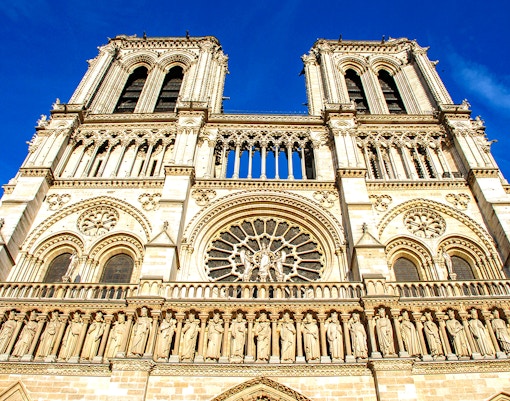- Grand Gothic arches: The nave is flanked by towering columns supporting ribbed vaults that draw your eyes upward, creating an ethereal, spiritual ambiance.
- Light play: Observe how light filters through the stained-glass windows, illuminating the space with a colorful glow.
Why visit Notre-Dame?
As one of the most iconic Gothic masterpieces in the world, it offers a captivating blend of art, spirituality, and storytelling.
The cathedral's breathtaking stained-glass Rose Windows, intricately carved façades, and towering spire reflect centuries of craftsmanship and devotion.
Beyond its architectural grandeur, Notre Dame has been the scene of pivotal moments in history, from Napoleon's coronation to Joan of Arc's beatification.
Climbing the towers rewards visitors with stunning panoramic views of Paris. The interior holds sacred relics and treasures, including the Crown of Thorns.
Whether you're drawn by its spiritual significance, its role in literature like Victor Hugo's The Hunchback of Notre-Dame, or its sheer beauty, the cathedral is a must-visit for anyone exploring Paris.
